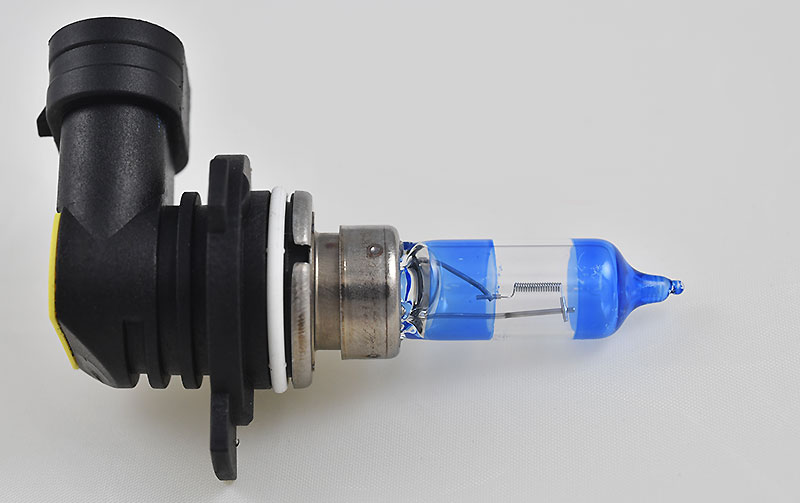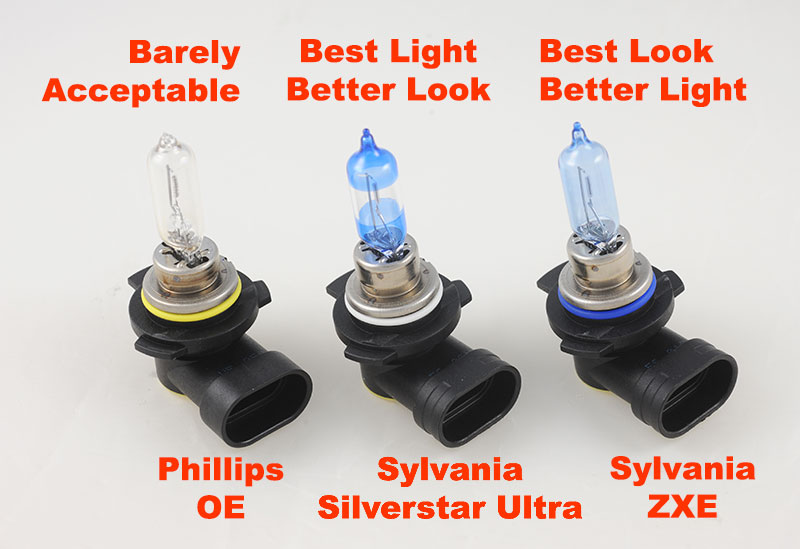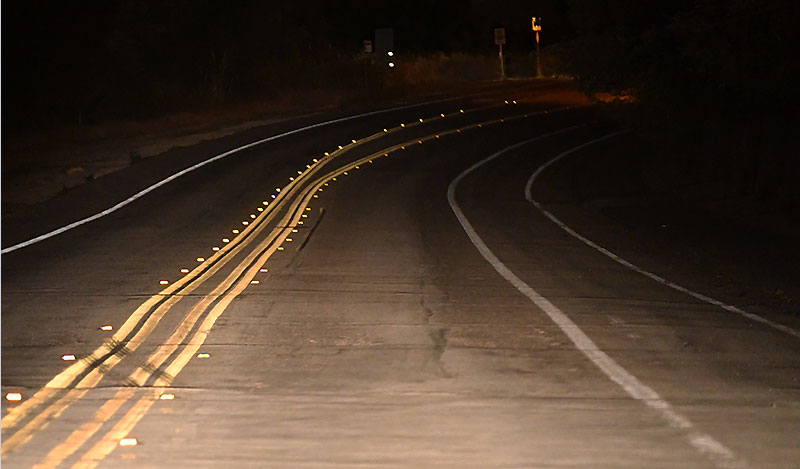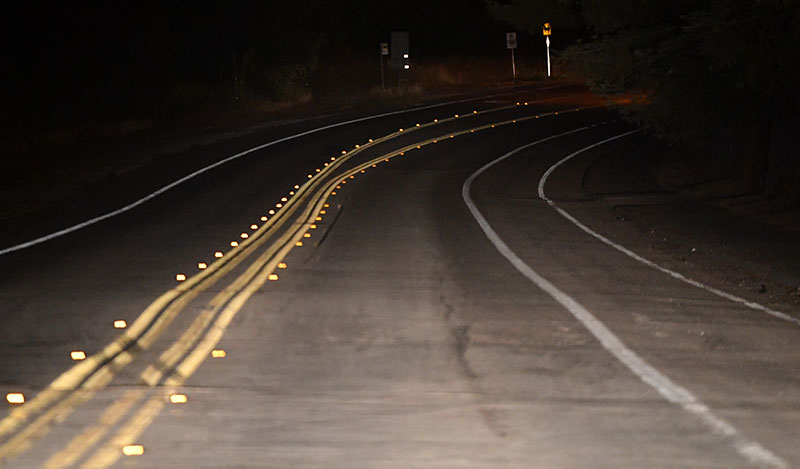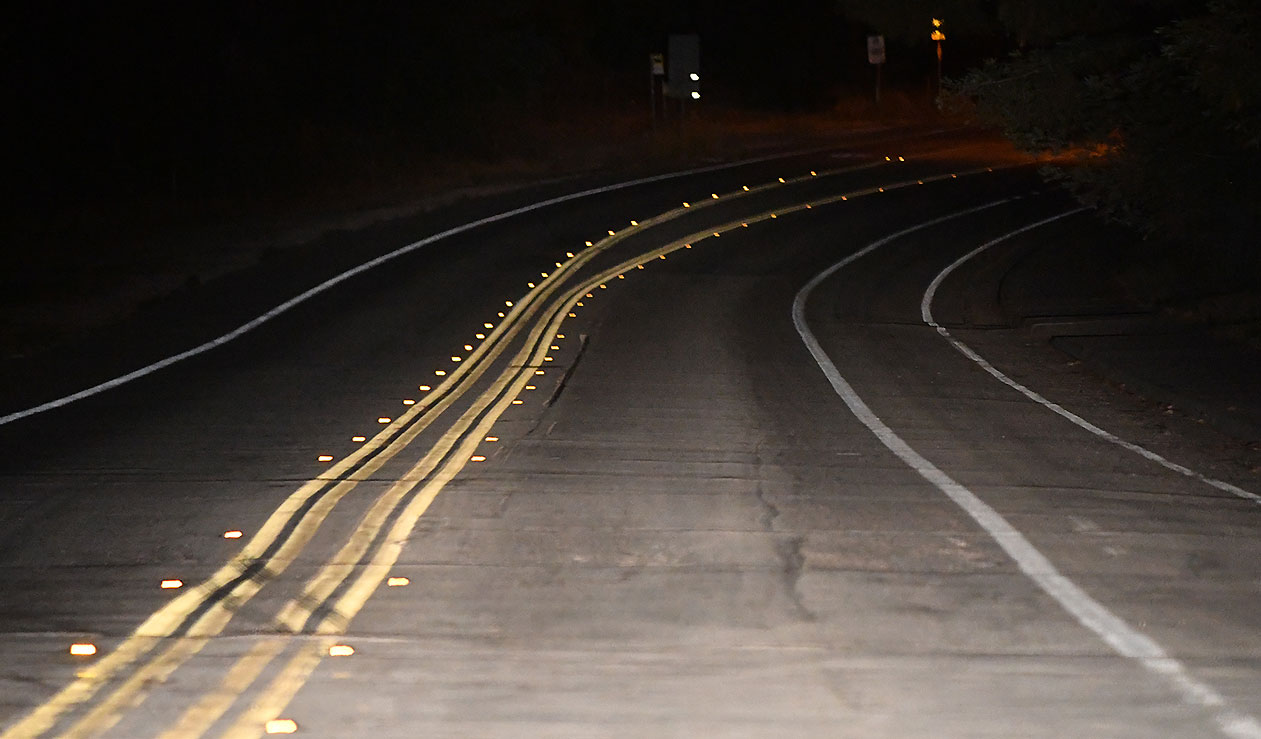Summary
How did Sylvania’s two aftermarket bulb choices work? In our ATS-V Coupe’s headlamps, they worked exactly as advertised. There is no question that the Ultra is a better bulb that a stock 9012.
User Review
( votes)Better Bulbs for ATSes.
Our Review of Headlamp Bulb Upgrades for Compact Cadillacs
by Hib Halverson, Editor, V-Net Product Evaluation Pages
All Cadillac ATS headlamps have only one bulb. If the car was ordered with the “Luxury Package” they have D3S HID bulbs. Cars without Luxury Packages have conventional, 9012 quartz-halogen bulbs. In either case, the change from low- to high-beam is accomplished mechanically by a device inside the headlamp “capsule” known as a shutter. On low-beam, the shutter closes to cut off part of the headlamp bulb’s beam and prevent glare from affecting oncoming drivers. When you flick the multifunction switch on the steering column to high-beam, the shutter opens allowing the bulb’s full beam to be projected downroad.
The ATS-V we use for product testing here on the V-Net is not equipped with the Luxury Package so it has conventional halogen headlights. We wanted to experiment with some aftermarket bulbs for the car, so we contacted Osram Sylvania and asked them to send us a pair of each of their 9012 headlamp bulb upgrade products, the “Silverstar Ultra” and the “ZXE.”
Typical of a lot of late model cars, changing headlamp bulbs in an ATS-V is a bit of a chore. The task requires temporarily “peeling back” the front of each inner fender to expose the back of the headlamp “capsule”. Then, you remove a twist-lock dust cover, twist the bulb to get it out of the capsule, then unplug and remove the bulb. Detailed instructions are in the Factory Service Manual or, if you have a subscription to GM Electronic Service Information, can be found in GMSi. The stock headlamp bulbs in our ATS-V were Phillips 9012 LLs. Below is an image of their “downroad” light and color temperature.
First, we tried a pair of Sylvania Silverstar Ultra 9012s. According to Sylvania product information, they are Sylvania’s brightest bulbs and have a cooler, or more whitish, color temperature. Below is an image of their downroad light and color temperature. It’s pretty obvious that the Ultras put out more light and their color temperature makes what you see with the appear more like it would look in daylight.
In the closeup, below, of a Silverstar Ultra, note the unusual blue bands at the front and rear sections of the bulb. Ryan DeDecker, Product Marketing Manager at Sylvania Automotive, told us in an email, “There are a couple of reasons for the coating and especially its location on the bulb. The blue tint acts as a filter, allowing light at the blue end of the light spectrum to pass through, which creates the “whiter” light. This whiter light is used more at the side of the roads for reflective items like street signs and road hazards. By keeping the center area (in front of the filament ) free of the coating, the full spectrum of light to pass through, creating greater luminance than would a fully-coated headlight. The greater luminance translates to more light output down the road and that makes the Silverstar ULTRA our farthest downroad headlight.”
After driving the car for several days with the Ultras, we removed them and installed Sylvania’s ZXE bulbs which are characterized by Sylvania as “HID attitude-xenon fueled.” What that means is a design goal of the bulb was to imitate the color temperature of a high-intensity discharge (HID) headlamp. The xenon-fueled part refers to the bulb’s inert gas charge is a mix of krypton and xenon, both of which are so-called “noble gases”. “Halogen products use a combination of Halogen and Noble gasses to improve life and performance of the lamp,” Ryan DeDecker stated. “Without these gasses, the lamps would not be able to supply the lumen output or lifespan that they do. Most Halogen products use Krypton as the Noble gas. zXe uses a mixture of Krypton and the higher performing Xenon gas to improve performance and provide whiter light. The Krypton-to-Xenon ratio is dependent on the bulb type. In some part numbers, such as the Sylvania Ultra and zXe products, the mix is the same; in others, it is different. Similarly, the gas used within HID lamps is Xenon, and in many forums, HID lamps are referred to as ‘Xenon lamps’. Another way of thinking of it is in terms of an engine’s fuel–the higher an octane rating, the higher performance of the engine. Xenon is the “premium” component in the mixture. If Krypton is an 87-octane, a Krypton/Xenon mixture bumps it up to 93.”
The ZXE’s light pattern is just a little less bright downroad. It’s color temperature is noticeably more cool.
How did Sylvania’s two aftermarket bulb choices work? In our ATS-V Coupe’s headlamps, they worked exactly as advertised. There is no question that the Ultra is a better bulb that a stock 9012. Its color temperature is optimized and it puts more light downroad where you need it. The ZXE definitely has an “HID attitude” in that its color temperature mimics that of some high-intensity discharge headlamps. The main point of the ZXE is to emit a spectrum of light to oncoming drivers such that they think your car has high-end HID headlamps and it does that very well. It, also, offers an improvement in downroad lighting but not quite as much as the Silverstar Ultra.
For more information visit Sylvania’s automotive lighting web site. https://www.osram-americas.com/en-us/products/automotive/Pages/default.aspx

